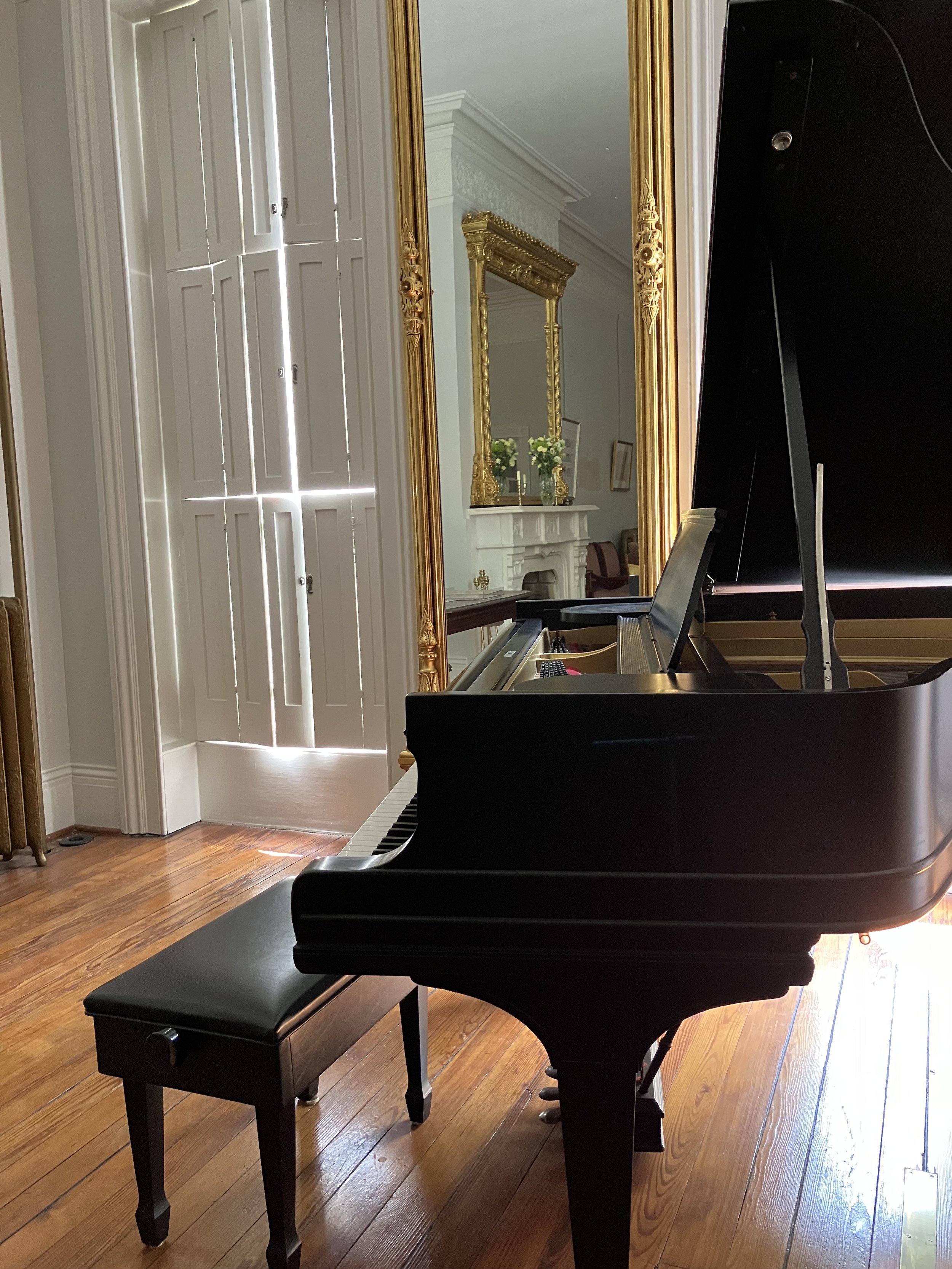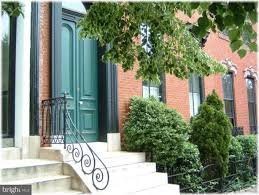Who We Are
The Union Square Soirée Salon Concert Series is redefining Baltimore's arts scene with a fresh and intimate approach. Unlike traditional concert halls, our salon concerts create a personal atmosphere that fosters direct connections between performers and the audience. This inviting setting encourages interaction, conversation, and a sense of community, making every concert a memorable shared experience.
Founded in January 2024, we operate out of a charming rowhome in the historic Union Square neighborhood. This unique place serves as a hybrid gallery and performance venue, integrating the arts into everyday life. We host classical and contemporary music performances, poetry readings, and engaging lectures on art and history.
Dedicated to supporting emerging artists and showcasing established talents, the Union Square Soirée nurtures a love for classical music in an inclusive environment. Since September 2024, we've launched the Young Artists of the Union Square Soirée program, offering young musicians valuable performance experience in a professional setting. By providing this supportive platform, we aim to inspire the next generation of artists to pursue their dreams and share their creativity with the world. Together, we can cultivate a vibrant cultural landscape that celebrates talent and inspiration!
A Journey Through Time:
The History of 25 S Stricker Street
Historic House, Baltimore, MD
The land before the neighborhood
By the late 1700s, Baltimore was a thriving port, but much of the land to the west of the Inner Harbor area was woodlands and farms. Among the notable farms was a vast plantation belonging to the wealthy Carroll family, starting during the Colonial era. Charles Carroll, a lawyer, and representative for Maryland in the Continental Congress during the Revolution, had begun construction at Mount Clare in 1756.
To the north, Thorowgood Smith, a wealthy Baltimore merchant, established Willow Brook, a summer estate that encompassed the modern Union Square neighborhood and surrounding areas. Smith, who served as the second mayor of Baltimore, sold Willow Brook in 1800 to the husband of a niece, John Donnell, a shipping merchant.
During the War of 1812, Donnell formed partnerships that secured commissions from the U.S. government allowing them to arm their merchant ships and capture merchant ships flying the British Union Jack. His partnership with fellow investors James Williams and John Gooding owned the schooners Sabine, Bona, and Eleanor.
Smith, Donnell’s uncle by marriage, had no children and fell into financial straits shortly after establishing Willow Brook. Subsequently, he sold the 26-acre estate to Donnell. It was roughly at this time that Smith was elected Mayor.
By 1823, a rapidly expanding Baltimore City had annexed the area. In 1846, Donnell ceded the land for what is now known as Union Square Park, though it was part of a real estate venture involving the sale of land on three of the streets surrounding the park, Lombard, Hollins, and Stricker. The Willow Brook mansion itself fronted on Gilmor Street, which forms the fourth side of Union Square.
Donnell and his three sons subdivided the land around the park into lots for rowhouses, and the lots were purchased mostly by wealthy people. This gave rise to park front lots of Stricker and Hollins being referred to as a “Millionaires Row” at a time when a million dollars was a vast fortune.
25 South Stricker
The lot at 25 South Stricker was purchased in 1872 by August Seemüller, who arranged for the house to be built. In 1869, Seemüller married Anne Moncure Crane, who in 1858 at the age of 20 began work on the novel Emily Chester. The novel was so popular upon publication in 1864 that 10 editions were printed for distribution in the U.S. and another four printed for distribution in England. In addition, it was translated into multiple other languages.
When Seemüller and Crane married, she was 31 and already a prominent figure in contemporary literature. Subsequent to Emily Chester, she wrote the novels Opportunity in 1867 (the year before her marriage), and Reginald Archer in 1871, two years after her marriage. Her second and third novels, however, did not sell as well as Emily Chester.
Born January 7, 1838, into a wealthy Baltimore family, Crane was the third great-granddaughter on her father’s side of Jasper Crane, who had settled in the fledgling city of Newark, New Jersey. On her mother’s side, she was descended from William Stone, the third colonial governor of Maryland.
Her literary works were well received by the writing establishment of the day and she came into contact with Charles Dickens in 1868 when the famed English author was in Baltimore. Dickens is reported to have been especially impressed with her first novel.
The prominent American writer Henry James, whose work remains a mainstay of American literature classes, did not share Dickens’ enthusiasm for Crane’s novel. He wrote a scathing review of Emily Chester at the height of the novel’s popularity. At the time, James was virtually unknown as his breakthrough novel, Roderick Hudson, would not appear in print until 1875. James repeated his critiques of Crane’s work for the remainder of Crane’s life. After her death on December 10, 1872, at 34, a brief, unflattering death notice for Crane was published in The Nation. In her expansive work The Natural Woman: Science and Sentimentality in Nineteenth-Century America, Sheila Liming contends that James, who was on the staff at The Nation, wrote the notice. She also makes a strong case that James borrowed heavily from Crane’s first novel for his works. All the while, however, his critiques of her work, Liming argues, sought to have Crane’s literary status denigrated, largely resulting in her having been virtually forgotten.
When Crane and Seemüller left Baltimore after ordering the construction at 25 South Stricker, they took up residence in New York, and then they traveled to Europe in search of effective treatment for Crane’s chronic hepatitis. While in Germany in search of treatment, Crane died. About three years later, on September 25, 1875, August Seemüller died in Paris, France.
It is unclear whether either of them ever saw the house they built on Stricker Street, either under construction or after it was completed. The house was bequeathed to two sisters, granddaughters of Augustus Seemüller, who lived in the house well into the 1900s. The sisters, Roberta and Augusta McLaughlin donated $350,000 they had inherited for the purchase of a 16-acre farm in Towson for the purpose of building housing for senior citizens.
Construction began in 1958 and the operation, known as Pickersgill, remains in operation. One of the sisters, who survived well into her 90s, visited the house before the second owner John Scott sold the house to Juan and Amanda Gonzalez, who purchased the home in 2010. By then, it had fallen into disrepair, much to the sister’s dismay. In the years since the Gonzalezes have made substantial renovations to the home as part of a years-long effort to modernize it in a way faithful to its heritage.
Meet the Board Members
-

Amanda Gonzalez
TREASURER
-

Juan Gonzalez
FOUNDER and PRESIDENT
-

Anne Adams–Kennedy
MARKETING
-
Jim Kennedy
COMMUNITY OUTREACH
-

Bomin Park
EVENT ADMINISTRATOR
-

John T. Bullock
BOARD MEMBER AT LARGE
-

Ramilya Saubanova
FOUNDER and VICE PRESIDENT



